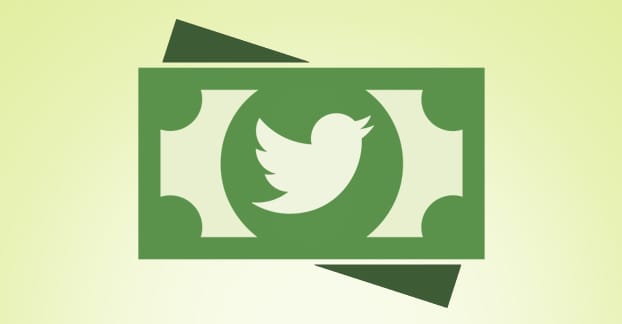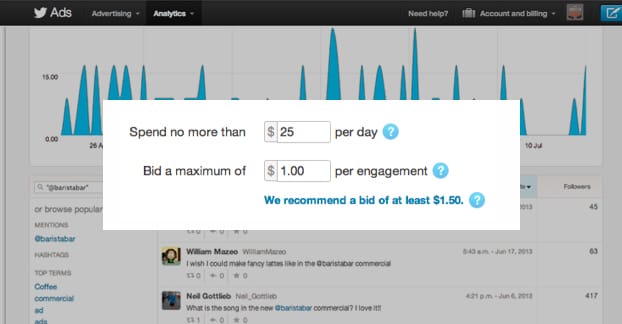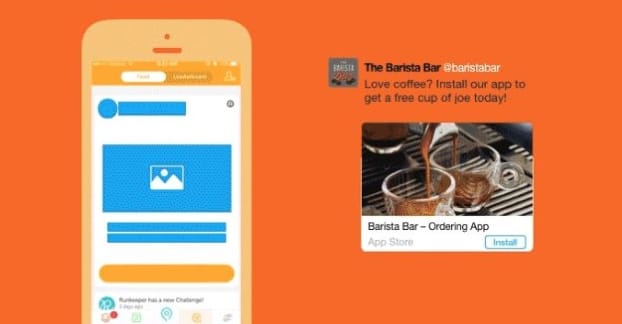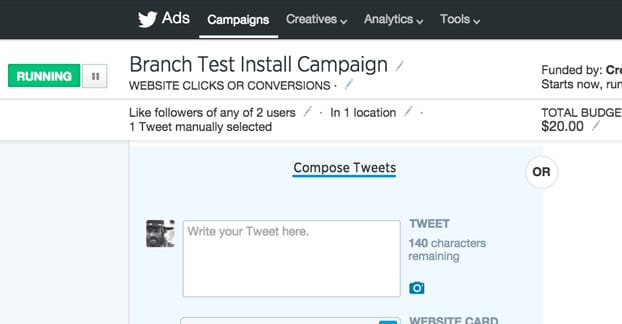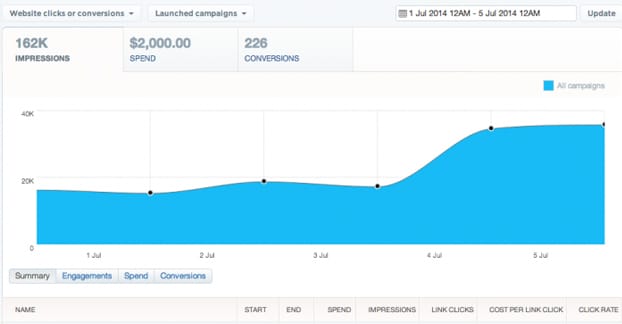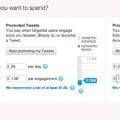Twitter ads are paid ads, and paid ads have an attraction for all manner of businesses. Bob’s Shoe Shack wants to use Twitter ads to attract local shoe-needing citizens. Coca-Cola wants to use Twitter ads to promote the latest eSport they’re funding. Both of them can use the same system, but they are going to have drastically different budgets. Coke probably has a budget for Twitter in the $100,000+ range per month, whereas Bob might have $100 in pocket change to throw at it each month.
The thing that draws everyone together is the desire to spend what money they have most effectively. Coke simply can run more experiments at once, that’s all. On the other hand, whereas Bob is trying to target a few thousand local users, Coke has a global audience. Volume alone means Coke needs to spend every penny wisely, or they could lose out on hundreds of thousands of exposures and clicks.
What is the average spend for a month of Twitter ads? It depends a lot on your industry, your competition, how well you’ve optimized your ads, and the scale of your business. However, globally across all of Twitter, numbers are surprisingly low. They aren’t “found in your startup’s couch” low, but they certainly aren’t going to give Coke pause.
Buffer’s data indicates that the industry average for social media marketing as a whole is somewhere between $6,000 and $11,000 per month. The Content Factory studies outsourcing and found that $4,000-$7,000 per month is an average for outsourced social media marketing. Twitter alone accounts for $2,000-$4,000 of that budget per month. Some types of ads are crazy expensive, though. For example, getting a trend promoted will run you $200,000 per day. That’s Coke territory, not something Bob is going to dream of.
Now, your numbers will rise or fall depending on the above list of factors. If you have stiff competition, costs per click will rise, so you will need to spend more than average to reach the audience you want to reach. If you’re facing a holiday, costs will rise as well. Some industries are naturally more expensive than others, like finances and medical. On the flip side, costs decrease when you optimize your ads properly, when you’re in a less competitive niche, and when your quality score rises.
I can’t give you specific numbers for your business, because it really all comes down to your own marketing budget. How much do you have for marketing as a whole? Studies indicate that, on average, businesses spend around 20% of their total marketing budget on social media. Of that, you’re probably dividing most of your time between Facebook and Twitter. I would say 35% of your social media budget should go to Twitter, though you can tweak that number depending on how effective Twitter is versus Facebook. I err on the side of Facebook for a number of reasons, but Twitter shouldn’t be ignored or underestimated.
Now, when you’re spending money on social media advertising, you have to remember that there are more expenses than just the pure cost per click of your ads. You have a number of different places where money can either smooth out the process, speed it up, or make it happen in the first place.
First up is the graphic design. You don’t need to spend a ton on graphic design, but you will generally need to invest some money in it. Remember, you can’t just go to Google and find an image you want to use. You have to find an image via creative commons that you can license to use for your brand, and commercial usage has additional restrictions. This means you’ll have a few options.
- Spend time – or spend money to pay someone for their time – to hunt down a creative commons free licensed image that suits your needs.
- Spend money on a membership for a stock photo site. These sites will have libraries of photos you can access and use for a fee.
- Spend money on a stock photo license. Some stock photo sites are free to browse, but each individual image will cost money to license, typically for a time-limited use or a usage limit. Make sure you know what kind of license you’re getting.
- Spend money on a license for a non-stock photo. Photographers will often be willing to sell a license to their work, for the right price. Just don’t try to ask them to lend you their image for an insultingly low price or for free, lest you end up mocked on For Exposure.
- Pay a site like Canva for use of their resources. Canva is a graphic design engine that has a library of stock images they have made available for use. Some of them are free, but many of them will cost a fee to rent for a month. You can use the elements as many times as you want during the time you have them licensed, and the final product is yours to use forever, but you will have to pay up front to use the final product.
- Pay a photographer or graphic artist to create an image for you from scratch. Freelancers are always happy to work with a brand and sell their work, though their terms will vary widely from freelancer to freelancer. You can find some very cheap work on Fiverr, and some of it will even be of decent quality, or you can find someone through UpWork or Freelancer. You can even find individuals through their own portfolio sites and work with them directly.
Graphic design is perhaps one of the most expensive elements of marketing that most people don’t think about. Not only do you have your static images, like your cover photo and profile picture, you also have images for blog posts, images for landing pages, and of course every image for every ad you run.
Next up is ad copy. Copy is generally going to cost less than the graphic design, but then it all depends on whether or not you’re writing it, doesn’t it? If you write the copy yourself, you’re only paying in the time it takes to come up with a tweet. If you’re paying someone else, you might be paying a few cents per word, or you might be paying a flat couple of bucks per tweet. You can get a tweet for under $1 on a site like Textbroker, but it’s not going to have marketing education behind it, it’s just going to be some dude writing a sentence.
Copy gets more expensive when you consider the copy that needs to be created outside of your Twitter marketing. Landing page copy, blog posts, and ebooks can all get quite a bit more expensive. For a single blog post you can pay a low bidder $30 or so, or you can pay a highly qualified freelance marketer $1,500 or more. It’s really entirely up to you.
You’ll need to pay for landing page design and content as well. It’s outside the scope of Twitter ads, but it’s still an expense that will go into your marketing budget. Landing pages are important, folks!
You also have to consider scheduling and management tools. There are a lot of different ways you can manage your Twitter presence, both the organic side and the paid side. Many tools are free, but you can spend as much or as little as you want. Buffer is free for a low level of usage but has plans that range from $10 to $400 per month. HootSuite is an amazing tool for scheduling all sorts of marketing across different platforms, and their plans range from $10 per month to a completely customized plan with costs scaling according to your needs. Sprout Social is an excellent tool that starts at $100 per month.
You may want to pay for audience research or analytics. Analytics tools are right up there with management tools; they have free options, including Twitter’s default analytics, but there’s also third party options to consider. Twitonomy, my favorite, will run you $20 per month.
While analytics are not strictly necessary for advertising, they can give you a good idea of who your users are, and thus who you should be targeting in your marketing. The general idea is that the more information you have, the more specifically you can target your advertising, and the less money you will have to pay for that advertising. If you’re paying $20 per month for analytics, but you’re saving $100 per month on cheaper, more effective ads, you’re coming out way ahead.
You can pay for premium levels of education or consulting. This is another expense that you could pay for, but don’t have to. Essentially, instead of paying for the copy, paying for the images, and paying for someone to manage your advertising for you, you can pay to learn all of that yourself. You can, of course, simply take the time to research and learn graphic design, internet copywriting, and social media marketing on your own using free resources, but that’s going to take a heck of a lot of time. You can pay for premium literature and one-on-one consulting – or even webinars and courses with high profile marketers who don’t offer one-on-one coaching.
Typically you won’t be paying for all of the education and all of the work at the same time. They’re alternative strategies. It simply depends on whether you want to learn to do it all yourself, or if your time is better spent doing something else to further your business. A personal touch in the marketing can be very effective, but if you’re letting more crucial business outreach falter because you’re acting as marketing director, you’re probably wasting both time and money.
It’s a common problem I see with brands of all sizes. People get so wrapped up in saving money in the short term that they jeopardize the long term. You might be able to save a hundred bucks a month by doing your marketing yourself, but you’re not out there making deals and coming up with new strategies or products which could get you a lot more than the marketing gets you. Plus, you can always pay someone to handle your marketing; it’s a lot harder to pay someone to run your business.
You will, of course, have to pay for the ad reach or clicks on top of everything. You can’t underestimate the costs of the actual pay per click or pay per lead advertising you’re running on Twitter itself. I’ve left it for last because so many people think of it as the only source of expense with social marketing or PPC. The fact is, all of the above are also valid expenses, and can often overtake the actual PPC in terms of total cost.
How much will this specifically cost? Again, it will vary according to a wide range of factors. Twitter publishes their own recommended bids, which include figures like $2.50-$3.50 per follower for a followers campaign, $1.50-$2.50 per engagement for an engagement campaign, and $2-$3.25 per install for app installs campaigns. Leads are the most expensive, though awareness can be up there as well.
Twitter is, of course, going to inflate the numbers a little bit. They want to encourage higher bids so they can provide higher numbers of engagement, installs, and follows. In some instances, you’ll be able to find clicks, leads, or follows for under $1 each.
You do have to balance your cost with the effectiveness of the ads, as well. For most forms of Twitter advertising, the exposure is free, but the engagement, the clicks, or the follows cost money. You might be able to get extremely cheap followers, for under 10 cents each, but how valid are those followers going to be? It’s the same problem with “penny clicks” on Google PPC; those penny clicks are ultra-cheap, but they’re coming from people outside of your demographics or from bots, so they aren’t doing you any good.
